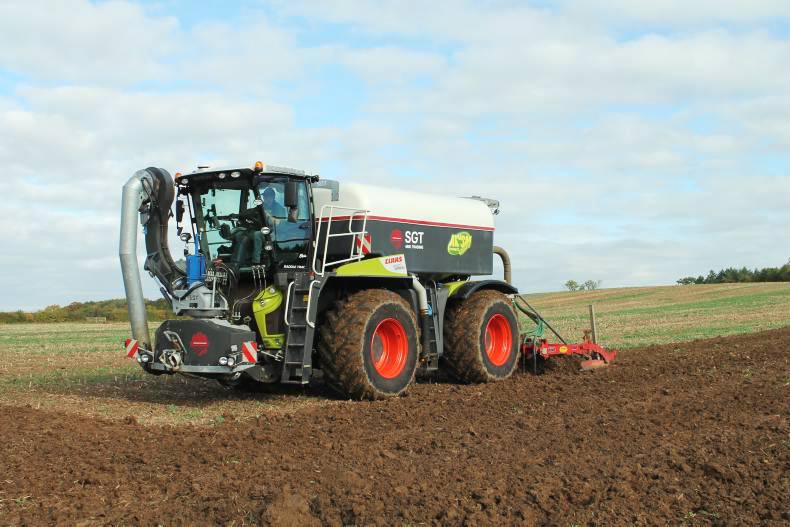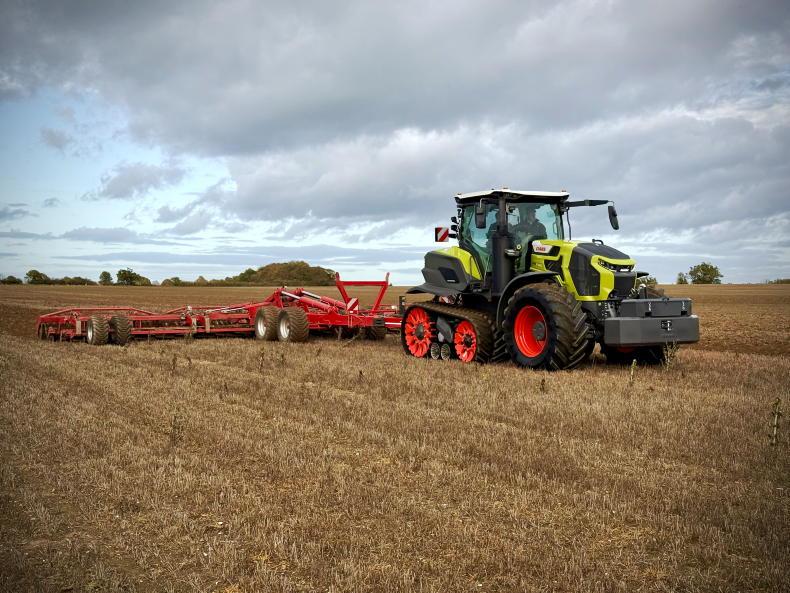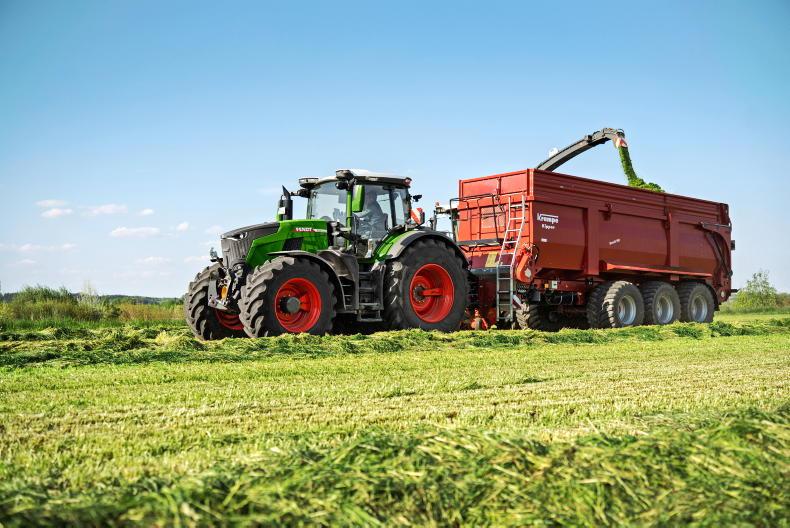The agricultural tractor market is dominated by what we would consider to be conventional tractor types. However, a few manufacturers have stepped outside the box to give us something a little different.
Fendt is the most notable manufacturer with its Toolcarrier and Xylon ranges. Deutz gave us the Intrac with its front-mounted cab and front linkage (before front linkage was popular) and Steyr provided a powerful prime-mover in its 8320/9320.
Today, almost all of these have disappeared from production with the exception of one, the Claas Xerion. Long before the German company acquired the Renault tractor business, it developed its own systems tractor. In fact, Claas had been working on various systems tractor ideas throughout its modern history.
Initial development of the Claas Xerion took place in the late 1970s and the 1980s. A stumbling block to its development was that the transmission Claas was using became unavailable. Claas then had to set about developing its own CVT transmission, which it fitted to the Claas Xerion 2000 series of large tractors launched in the 1990s.
Features of the original Class Xerion concept were a high horsepower tractor with four-wheel steering. Part of the concept was that it had a platform onto which implements, tanks, a fifth wheel, spreader or whatever you could imagine would be built. Even a machine such as a beet harvester could be built on and around it.
Also, the cab could be repositioned from the conventional position – forward facing out over the bonnet – to rear-facing over the tractor’s linkage and PTO. This was done hydraulically, and quickly, opening the door to all sorts of potential scenarios. The cab could also be mounted out front over the engine, which provided a large rear mounting platform for even more system tractor options.
Today, Claas has sold over 3,000 Xerion tractors in Europe and, with horsepower demands continually increasing, the range looks as if it has just come of age. A little earlier this year the Irish Farmers Journal travelled to the UK to view the latest Claas Xerions in action.
Today, the swivelling cab and systems concept hasn’t changed. What has changed is the number of build options – that is the option to de-spec for particular applications. For example, as a high-horsepower draught tractor a customer may not want front linkage, rear PTO or 50km/h transmission. That shaves around £15,000 plus VAT off the retail price of a Xerion 4000, bringing it down to around £175,000 plus VAT.
Specification
There are three models in the Xerion range – the 4000, 4500 and 5000. Each is available as a Trac (fixed cab), Trac VC (rotating cab) and Saddle Trac (cab over front of engine) build. Powering all are Tier IV, six-cylinder Mercedes engines which develop 419hp, 479hp and 520hp respectively.
Claas’s Xerion is only available with a Cmatic (CVT) transmission. There are two transmissions used, both supplied by ZF – the Eccom 4.5 and Eccom 5.0. Which is used depends on Xerion configuration – working in one direction (Trac and Saddle Trac), both directions (Trac VC), top speed and horsepower.
Raba axles provide four-wheel steering (including crabbing to minimise tracking) and Xerions are available in both 40km/h and 50km/h variants. PTO shafts are the larger 1¾in, in six and 20-spline. An even larger 2¼in, 22 spline shaft is available for engine outputs above 500hp.
Standard hydraulic output is an impressive 195 litres/min. For high-demand operations such as driving multiple hydraulic fans on large air seeders, a 250 litre/min system is available. Front linkage maximum lift capacity where fitted is over 8.5t, while maximum rear lift capacity is almost 14t.
Wheelbase on all models is 3.6 metres while widths vary from just under 3 metres to 3.3 metres depending on tyres specified. Without ballast, the Xerion 4500 and 5000 weigh in at just over 16.5t. The smaller 4000 weighs just over 16t. For heavy draught work, a maximum ballast of 3.2t can be added up front and 3.4t on the rear. In-cab control is the familiar Cmotion multi-function control lever and Cebis terminal.
Visit
On the visit to the UK, Claas presented a number of working options in the field. Pulling a large Lemken Rubin 12 disc cultivator was a Xerion 5000 Trac with no rear PTO or front linkage. It was shod on Trelleborg 900/60R42 tyres all round. Up front was a large weight block with two extra wafers, while on the rear platform was a stack of 400kg wafers to add weight for traction.

Also operating on-site were two Claas Saddle Trac 4000s. One was fitted with a Tebbe twin-disc dung speeder. The Tebbe spreader had only just been developed for the Claas Xerion Saddle Trac.
The Tebbe spreader body has a 16t load capacity for liquids or solids. Two mechanically driven 1-metre diameter discs with four vanes provide the spreading function. These are fed by two hydraulically driven conveyors.
Load-over height was in the region of 4 metres while the body itself was 4.5 metres long and 2.2 metres wide.
 On the second Claas Saddle Trac 4000 was an SGT slurry tank system injecting liquid slurry in combination with a Sumo Trio cultivator. SGT is a German company specialising in trailed and mounted slurry equipment. It is now part of the Austrian Bauer group.
On the second Claas Saddle Trac 4000 was an SGT slurry tank system injecting liquid slurry in combination with a Sumo Trio cultivator. SGT is a German company specialising in trailed and mounted slurry equipment. It is now part of the Austrian Bauer group.
SGT developed a system for the Claas Xerion Saddle Trac and was being operated by a contractor in the UK on our visit. A lighter than steel polyester tank carried on the Xerion has a capacity of 16,000 litres.
On the rear linkage of the Xerion was a 3.5-metre Sumo Trio cultivator which was being used to incorporate the liquid into the ground. It was operating at a depth of 250mm and at a forward speed of 10km/h (in stubble).
Up front an SGT loading arm draws liquid out of a slave tanker at an impressive rate. Arm diameter options are 250mm or 300mm and are paired to a 9,000 litre/min or 12,000 litre/min pump.
So with lots of power and lots of configuration choices and system options, Claas’s Xerion certainly seems to have come of age.













SHARING OPTIONS